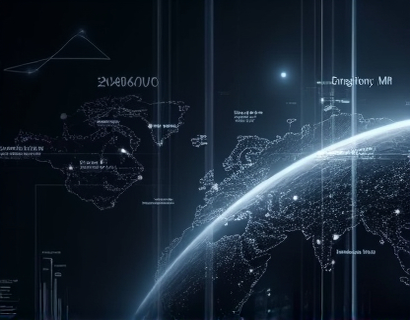Effortless Aquarium Management: Revolutionizing Operations for Owners and Businesses
In the world of aquarium ownership and business operations, managing an aquarium can be a complex and time-consuming task. From tracking the health and well-being of aquatic life to managing inventory and supplies, the challenges are numerous. However, with the advent of advanced software solutions, the landscape is changing, offering a new era of efficiency and enhanced customer engagement. This article delves into how cutting-edge software is transforming aquarium management, providing a competitive edge and elevating the overall experience for both owners and customers.
The Challenge of Traditional Aquarium Management
Traditionally, aquarium management involves a myriad of daily tasks that require meticulous attention and planning. Owners and business operators must monitor water parameters, feed schedules, and the health of each species. Inventory management for supplies such as food, decorations, and equipment adds another layer of complexity. Manual record-keeping and manual tracking not only consume valuable time but also increase the risk of errors and oversights. These challenges can lead to suboptimal conditions for aquatic life and a less satisfying experience for visitors or customers.
Introducing Advanced Software Solutions
The introduction of specialized software designed for aquarium management has revolutionized the way operators handle their operations. These tools are engineered to simplify and automate various tasks, from tracking aquatic life to managing supplies. By leveraging technology, aquarium owners and businesses can streamline their operations, reduce errors, and focus more on what they do best—caring for their aquatic environments and providing an exceptional experience for visitors.
Optimizing Inventory Management
One of the most significant benefits of aquarium management software is its ability to optimize inventory management. The software can track the quantity and type of supplies on hand, automatically generating alerts when items need to be reordered. This ensures that essential supplies are always available, reducing the risk of stockouts that can disrupt daily operations. Additionally, the software can analyze usage patterns to predict future needs, allowing for more accurate and efficient purchasing decisions. This level of precision not only saves time but also reduces costs associated with overstocking or understocking.
Streamlining Daily Tasks
Daily tasks such as monitoring water parameters, feeding schedules, and performing maintenance can be tedious and time-consuming. Advanced software solutions automate these tasks by providing real-time data and reminders. For instance, the software can monitor water quality parameters like pH, ammonia, and nitrate levels, alerting the operator if any readings fall outside the optimal range. This immediate feedback allows for prompt action, ensuring the health and well-being of the aquatic life. Feeding schedules can be set and managed within the software, sending notifications when it's time to feed specific species. Maintenance tasks such as water changes and filter cleaning can also be scheduled and tracked, ensuring that these critical activities are not overlooked.
Enhancing Customer Engagement
For aquarium businesses, customer engagement is crucial for success. Advanced software solutions offer tools to enhance the visitor experience, fostering a deeper connection between customers and the aquatic environment. Interactive features such as digital signage and mobile apps can provide visitors with detailed information about the species on display, including their habitats, dietary needs, and interesting facts. This educational component not only enriches the visitor experience but also promotes a greater appreciation for aquatic life. Additionally, the software can manage reservations and timed entries, reducing wait times and improving the overall flow of visitors through the facility.
Data-Driven Decision Making
One of the most powerful aspects of aquarium management software is its ability to provide data-driven insights. By collecting and analyzing data over time, operators can make informed decisions that optimize operations and improve outcomes. For example, the software can track the health and growth patterns of aquatic life, helping to identify the most effective care practices. It can also analyze visitor patterns and preferences, allowing for targeted marketing and improved exhibit design. These insights enable operators to refine their strategies, leading to better performance and a more sustainable business model.
Improving Operational Efficiency
Operational efficiency is a key factor in the success of any aquarium business. Advanced software solutions are designed to reduce manual labor and minimize the potential for human error. Automated reporting features generate comprehensive reports on various aspects of operations, from inventory levels to customer feedback. These reports can be accessed quickly and easily, providing a clear overview of the aquarium's performance. This level of transparency and efficiency allows operators to focus on strategic planning and growth, rather than getting bogged down by administrative tasks.
Scalability and Flexibility
As aquarium businesses grow, the need for scalable and flexible management solutions becomes increasingly important. Advanced software is built to accommodate expanding operations, whether it's adding new exhibits, increasing the number of species, or managing larger visitor volumes. The software can be customized to fit the specific needs of each business, ensuring that it remains a valuable tool as the operation evolves. This flexibility ensures that the software remains relevant and effective, providing long-term value to the business.
Case Studies and Real-World Applications
Several aquarium businesses and owners have already experienced the transformative impact of advanced management software. For instance, a mid-sized aquarium in a bustling city implemented a comprehensive software solution to manage their growing collection and increasing visitor numbers. Within six months, they reported a 30% reduction in manual inventory checks and a 25% decrease in supply-related errors. The software's real-time monitoring and automated alerts allowed the staff to respond quickly to any issues, maintaining optimal conditions for the aquatic life. Visitor satisfaction scores also saw a significant improvement, with guests praising the well-maintained exhibits and informative digital displays.
Another example is a large public aquarium that used the software to optimize their feeding and maintenance schedules. By automating these tasks, the staff could allocate more time to educational programs and interactive experiences for visitors. The software's data analytics features provided valuable insights into the health and behavior of the aquatic residents, leading to enhanced care practices and a more vibrant exhibit environment. The aquarium saw a 40% increase in repeat visitors, attributing this success to the improved overall experience and the engaging educational content provided through the software.
Future Trends and Innovations
The future of aquarium management software is promising, with ongoing advancements in technology poised to bring even more benefits. Integration with Internet of Things (IoT) devices, such as smart sensors for water quality monitoring, is becoming more prevalent. These devices can provide continuous, real-time data, further enhancing the software's ability to maintain optimal conditions. Artificial intelligence and machine learning algorithms are also being incorporated to predict potential issues before they arise, allowing for proactive management. Virtual and augmented reality technologies are being explored to create immersive experiences for visitors, making the aquarium visit more engaging and educational.
Conclusion
The integration of advanced software solutions in aquarium management is not just a trend but a necessity for modern operations. By optimizing inventory management, streamlining daily tasks, and enhancing customer engagement, these tools provide a competitive advantage in a crowded market. The data-driven insights and operational efficiency gained through software use can lead to improved performance and a superior customer experience. As the technology continues to evolve, aquarium owners and businesses that embrace these innovations will be well-positioned to thrive in the future.










































